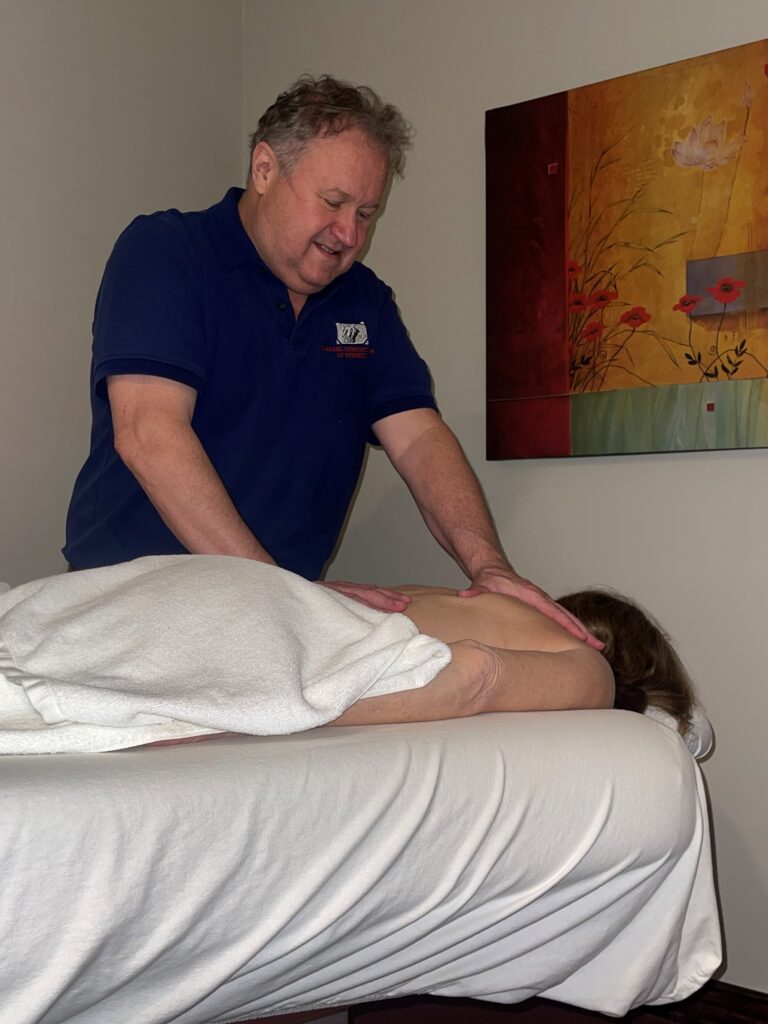Salonpas sat down with noted masseuse, John G. Louis, LMT, CIMI – Founder & Director of The Massage Therapy Center of Winnetka, to discuss the role massage can play in reducing pain.

John, who has been practicing massage since 1980 has the AMTA Certification (AMTA, Active Isolated Stretch Practicing). He individualizes each treatment based on the unique needs of the client at the time of service.
“My goal is to make a significant therapeutic change with every visit,” says John G. Louis who also serves as a columnist for Massage Today Magazine. “My massage therapy career began working full time with professional athletes. In 1989, I founded Massage Therapy Center of Winnetka. Most recently, I served as the massage therapist for the 2005 World Series Champion Chicago White Sox baseball team. In addition to operating the clinic, I also own Acuforce International, Inc., a company that makes innovative healthcare products. Since 1999, I’ve served on the Advisory Board of the Chicago School of Massage Therapy and serve as a Clinical Instructor for Trinity University, Deerfield, Illinois.”
What types of technique of massage therapy are used to reduce body pain?
My favorite techniques are trigger point therapy and myofascial release. I have found these techniques are the most effective.
VeryWell Health defines “trigger point therapy as a soft-tissue treatment that helps release tense, painful knots in muscles and fascia (web of connective tissue). Components of trigger point therapy may include sustained pressure, posture and movement correction, electrical stimulation, dry needling, and massage.”
Healthline defines “myofascial release as a type of physical therapy often used to treat myofascial pain syndrome. Myofascial pain syndrome is a chronic pain disorder caused by sensitivity and tightness in the myofascial tissues. These tissues surround and support the muscles throughout the body. The pain usually originates from specific points within the myofascial tissues called ‘trigger points.’
“Myofascial release focuses on reducing pain by easing the tension and tightness in the trigger points. It’s not always easy to understand what trigger point is responsible for the pain. Localizing pain to a specific trigger point is very difficult. For that reason, myofascial release is often used over a broad area of muscle and tissue rather than at single points.”
Most myofascial release treatments take place during a massage therapy session. Some chiropractors and traditional medical practitioners may also offer it.”
“The massage therapist will gently massage the myofascia and feel for stiff or tightened areas. Normal myofascia should feel pliable and elastic. The therapist will begin massaging and stretching the areas that feel rigid with light manual pressure. The therapist then aids the tissue and supportive sheath in releasing pressure and tightness. The process is repeated multiple times on the same trigger point and on other trigger points until the therapist feels the tension is fully released,” reports Healthline.
Do you practice the same massage techniques on ‘regular’ people that you use on professional athletes?
I use the same techniques with the entire population, however, because athletes generally tax their bodies a great deal, they tend to need more time and focused deeper pressure to bring therapeutic change.
Are you familiar with the benefits of topical pain medication vs. systemics (pills)? If so, do you ever use topical pain relievers like Salonpas for your own pain relief or recommend to others?
I try to avoid using and recommending oral medications for inflammation. But, I do use topical analgesics.
Do you recommend any particular type of warm up for athletes and weekend warriors who are doing athletics to help minimize potential pain?
I am certified in a stretching technique called Active Isolated Stretch. I like it best because it respects the Myotatic Stretch Reflex. It’s a very safe technique and helps to prevent injury and warm the muscle tissue gradually.
“Active Isolated Stretching (AIS) is one of the methods of stretching most used by today’s athletes, massage therapists, personal/athletic trainers, and professionals,” reports Stretching USA. “Active Isolated Stretching allows the body to repair itself and also to prepare for daily activity. The Active Isolated Stretching technique involves the method of holding each stretch for only two seconds. This method of stretching is also known to work with the body’s natural physiological makeup to improve circulation and increase the elasticity of muscle joints and fascia. There are several ways of learning about Active Isolated Stretching (AIS).”
Tell us how your journey led you to to founding the Massage Therapy Center of Winnetka.
While I really enjoyed my 9 years working full-time with professional sports, the travel was taking a toll of me. I was single at the time, but I wanted to get married and have a family. Opening a clinic was the best option for me allowing me to stay home. That was back in 1989. My clinic is now 34 years old!
For more information on living a healthy lifestyle, please “like” Salonpas on Facebook and follow us Instagram and Twitter!